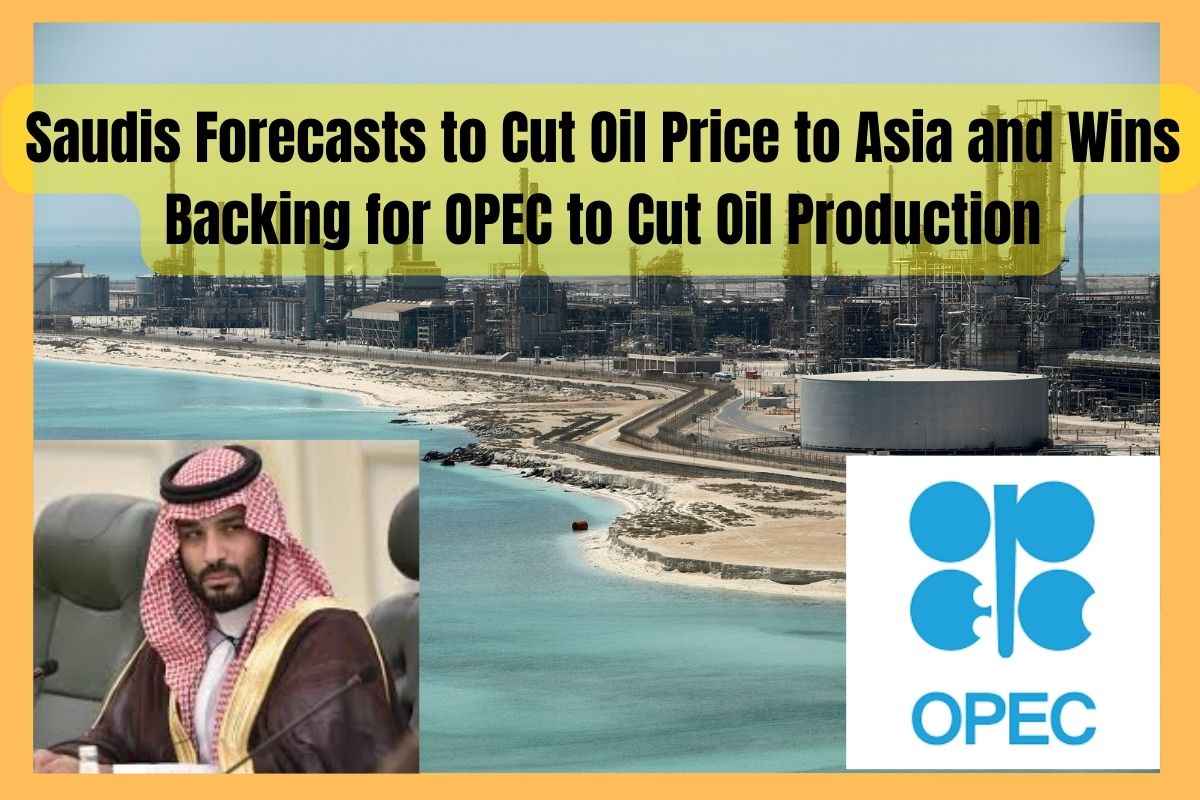Saudi Arabia is expected to reduce its official crude selling price for Asian buyers. According to some survey samples, a total of 6 refiners and traders have prompted this move to intensify the competition in the Asian market.
Saudi Arabia is asking others in the OPEC+ coalition to reduce their oil-output quotas in a bid to store up global markets, however, some members are not agreeing with this proposal. the market did not widely expect the Saudai decision to cut the production by 1 million barrels per day.
Saudi Arabia pledged to enlarge an existing voluntary cut of 1 mn barrels a day. So the Asian market will receive cheaper crude from the United States and Europe, including Guyana.
On Sunday, The Organization of Petroleum Exporting Countries and its partners, known as OPEC, decided to no changes to its preplanned oil production cuts for the remaining year.
However, Saudi Arabia, the top oil exporter in the World, announced a further voluntary output cut that will be affected from July. Saudis to cut oil prices to Asia for November and until the end of next year. Then the board will review the decision again in the next month.
The Kingdom’s output will be declining to 9 million barrels a day, Saudi Arabia’s energy ministry has stated. The influx of non-middle Eastern oil comes as Brent crude, is at near parity with the Dubai benchmark, according to PVM Oil Associates.
The unusual development is the outcome of the OPEC production cuts. Notably, it is Saudi Arabia’s Voluntary cuts, it has pushed the Middle Eastern oil price higher.
As a result, non-Middle Eastern oil become more attractive for bargain hunters in Asia, according to Bloomberg reports. So, it influences greatly the unintended effects of production cuts, for example, increased demand for less expensive oil.
As per the Bloomberg reports, the average price cut forecast is at $1.05 per barrel of Arab Light, for deliveries in the successive year in February. But the individual forecast ranges between $0.75 per barrel and $2 per barrel, According to the news updates.
In the previous few months, Saudi Arabia has been raising its prices for Asian buyers. They raised them for successive five months in a row till November. They have also declared that they will keep prices for Arab Light unchanged until December deliveries. It did. However, raising the price for the Arab Light by $0.70 per barrel.
In an unusual step, OPEC officials stated regarding the additional voluntary cuts, developed to take the total reduction above 2mn b/d or about 2 percent of world supply. Also, the individual members of the board will declare this matter instead of the secretariat.
The uncertainty fed into developing market anxiety that strains have been emerging in the OPEC+ collision for more than a year. it will have a limited effect so far on prices.
The members of OPEC were wrangled over the production targets, so the meeting had first been delayed. it was moved online instead ministers meet face to face in Vienna at OPEC’s headquarters. brent crude, the international oil benchmark, initially railed at the news of the price cut but later reversed to trade down on the day. It made a contract for delivery in February losing more than n 2 percent to trade approximately $80 a barrel.
According to all the analysis, if all the cuts were made, supplies would tighten significantly during the first quarter of the next year. the market is looking forward to testing OPEC + and if $80 a barrel is a floor they can defend, According to Alkadiri of Eurasia Group.
The cuts are being billed as voluntary undermines the psychological impact on the market a little. However, if the full cut is applied the overall impact will not be discounted.
There is a healthy enough demand for Saudi barrels in Asia regardless of the competition of the U.S. Guyana and the North Sea. On the other hand, supply is likely to remain tight in the future.
The overwhelming expectations of traders from the OPEC+ and analysts are likely to happen in the next few days. The discussion will be on whether the Russians and Arbias will extend their production cuts in 2024. However, at this point, they probably can’t afford not to.






